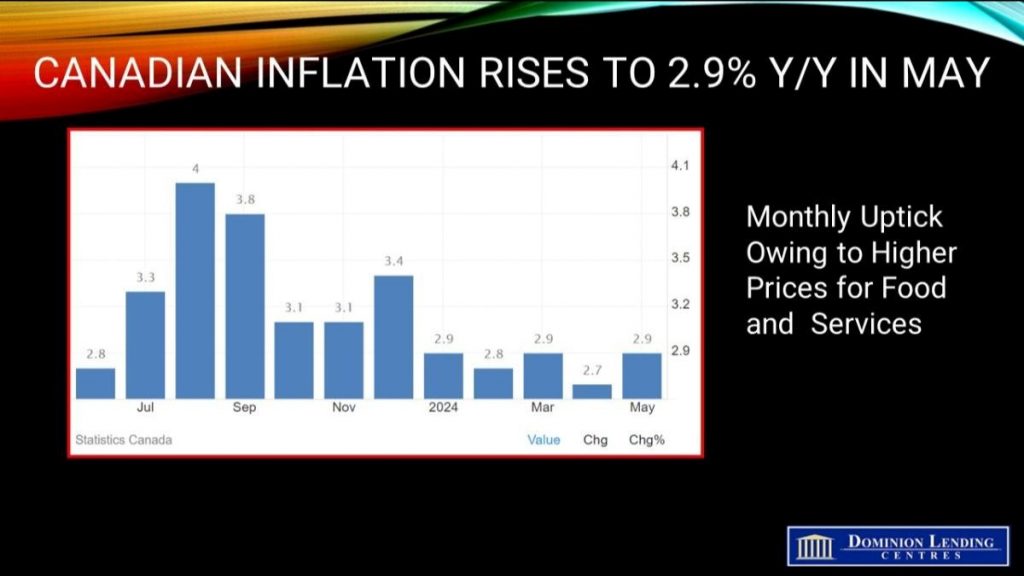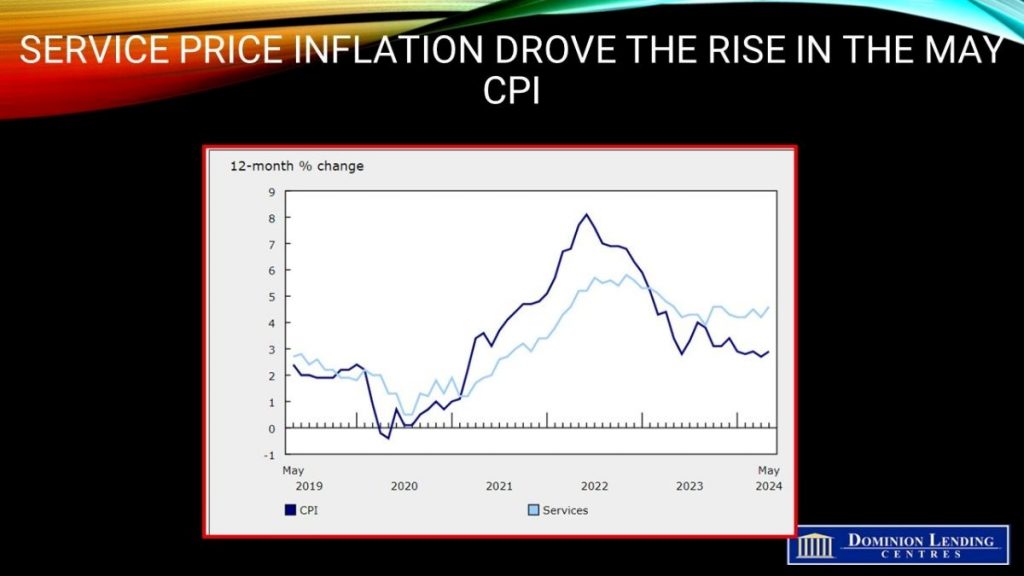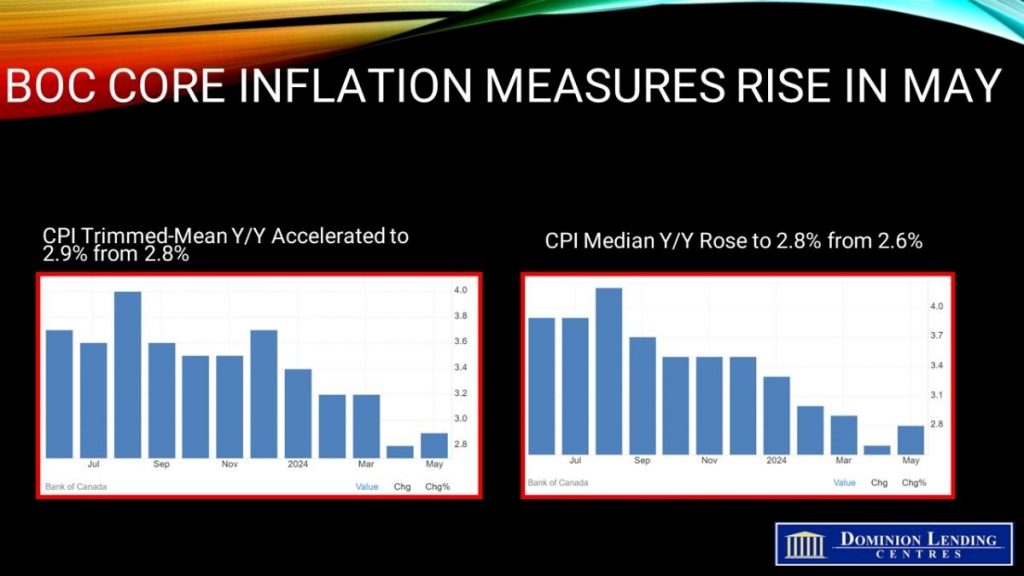Articles
Posted on June 25, 2024
Canadian CPI Inflation Rose in May, Reducing the Chances of a July Rate Cut
Canadian Inflation Rose In May, Surprising Markets
Inflation unexpectedly rose in May, disappointing the Bank of Canada as it deliberates the possibility of another rate cut next month.
The Consumer Price Index (CPI) rose 2.9% in May from a year ago, up from a 2.7% reading in April. This increase primarily reflects higher prices for services and, to a lesser extent, food. According to a Bloomberg survey, economists had expected 2.6% inflation last month.
Cellular services, travel tours, rent, and air transportation boosted service prices by 4.6% year-over-year (y/y) in May, up sharply from the 4.2% rise in April. Price growth for goods remained at 1%, although grocery prices rose more rapidly.
Monthly, the CPI index climbed 0.6% compared to expectations for a 0.3% gain and up from 0.5% in April. On a seasonally adjusted basis, inflation rose 0.3%.
The Bank of Canada’s preferred measures of core inflation, the trim and median core rates, exclude the more volatile price movements to assess the level of underlying inflation. The CPI trim accelerated to 2.9% in May, following a downwardly revised 2.8% rise the previous month. The CPI median rose two ticks to 2.8%. Both measures of core inflation surprised economists on the high side.
Shelter costs have been a massive component of inflation this cycle. In May, rent rose a whopping 0.9%, lifting the yearly rise to 8.9% y/y, the second largest contributor to annual inflation. The single most significant inflation driver–mortgage interest costs–ticked down a bit to 0.8% m/m, reducing the yearly pace to 23.3%. It peaked above 30% last year. Excluding shelter, inflation is rising 1.5% y/y, up from 1.2% last month.
Bottom Line
Today’s inflation reading was undoubtedly a disappointment for the Bank of Canada, and it reduces the chances of another rate cut when they meet again on July 24. However, the June inflation data will be released on July 16. Barring a significant drop in June inflation, the next interest rate cut will likely be at the September meeting. That’s not good for the housing market, which has slowed to a crawl in recent months. The decline in mortgage rates proceeds as market forces drive down bond yields. Canada’s labour market is slowing as the jobless rate ticks up. Tiff Macklem said yesterday that he did not expect the unemployment rate to rise significantly further this cycle.
Interest rate cuts will be more gradual because rapid population growth has boosted economic activity, forestalling a recession and adding to inflationary pressure. The central bank’s overnight policy rate, now at 4.75%, will gradually move to 3.0% by the end of next year.


